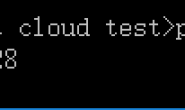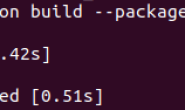Python数据库访问公共组件及模拟Http请求
模拟Http请求
在请求别人接口时,我们最常使用的是模拟Http请求。在python中有许多方式,我选用了新版的httplib2。有兴趣的可以查看一下其他文档。
# encoding: utf-8
__author__ = 'changyang'
'''
@author: changyang
@software: PyCharm
@file: httphelper.py
@time: 2015/12/14 10:48
@function:http请求操作
'''
import httplib2,json
#get
def get(url):
return handler(url,None,'GET')
#post
def post(url,data):
return handler(url,data,'POST')
#统一处理http函数
def handler(url,data,method):
try:
httpClient=httplib2.Http()
headers = {"Content-type": "application/x-www-form-urlencoded",
"Accept": "text/plain"}
if data!=None:
data=json.dumps(data)
response,content=httpClient.request(uri=url,method=method,body=data,headers=headers)
return content.decode('utf-8')
except Exception as e:
print(e)
if __name__=='__main__':
print('choice http method...')
Mysql数据库访问类
由于使用.net习惯了,还真不知道怎样描述,大家理解意思就行。是在不知道怎样说了,直接上代码。
# encoding: utf-8
__author__ = 'changyang'
'''
@author: changyang
@software: PyCharm
@file: mysql_helper.py
@time: 2015/12/24 16:15
@function:数据库访问帮助类
'''
import mysql.connector
class MySqlHelper(object):
def __init__(self,config_mysql):
self.create_connector(config_mysql)
#创建数据库连接
def create_connector(self,config_mysql):
try:
self.connector= mysql.connector.connect(
host=config_mysql['host'],
user=config_mysql['user'],
password=config_mysql['password'],
database=config_mysql['database'],
port=config_mysql['port'],
charset='utf8',
buffered=True
)
self.cursor=self.connector.cursor(buffered=True)
except Exception as e:
print('myql connector is error:%s' % e)
#插入单条信息,parameters为元组,sql语句中的占位符必须与参数的顺序相同,且sql语句中以‘%s’进行占位
def insert(self,sql,parameters):
try:
if sql==None or sql=='':
return 0
self.cursor.execute(sql,parameters)
self.connector.commit()
return self.cursor.rowcount
except Exception as e:
print('insert is error:%s' % e)
finally:
self.cursor.close()
self.connector.close()
#一次性插入多条数据,parameters为数组,每个元素都是一个元组,元组内容的顺序必须与sql语句中的占位符相同,且sql语句中以‘%s’进行占位
def multiinsert(self,sql,parameters):
try:
if sql==None or sql=='':
return 0
self.cursor.executemany(sql,parameters)
self.connector.commit()
return self.cursor.rowcount
except Exception as e:
print('multiinsert is error:%s' % e)
finally:
self.cursor.close()
self.connector.close()
#分页查询,parameters为元组,sql语句中的占位符必须与参数的顺序相同,且sql语句中以‘%s’进行占位
#可用于分页查询,但是需要在sql语句中进行分页
def findlimit(self,sql,parameters,size):
try:
if sql==None or sql=='':
return 0
self.cursor.execute(sql,parameters)
allcount=self.cursor.rowcount
list=None
if size!=0:
list= self.cursor.fetchmany(size)
else:
list= self.cursor.fetchall()
return list,allcount
except Exception as e:
print('findlimit is error:%s' % e)
finally:
self.connector.commit()
self.cursor.close()
self.connector.close()
#查询全部,parameters为元组,sql语句中的占位符必须与参数的顺序相同,且sql语句中以‘%s’进行占位
def findall(self,sql,parameters):
return self.findlimit(sql,parameters,0)
这里我使用了配置文件,便于后期管理,其实说白了,也就是一个数组。直接上配置
configs_mysql={
'host':'ip地址',
'user':'账号',
'password':'密码',
'database':'数据库',
'port':端口号
}
其他比较重要的访问类
xml和json相互转化
:
# encoding: utf-8
__author__ = 'changyang'
'''
@author: changyang
@software: PyCharm
@file: json_to_xml.py
@time: 2015/12/15 9:57
@function:json转化为xml
'''
import xmltodict,json
#xml转化为json
def xml_to_json(str):
if str=='':
raise 'str is null'
str=xmltodict.parse(str)
return json.dumps(str)
#
json转化为xml
def json_to_xml(str):
if str=='':
raise 'str is null'
str={
'Ticket':json.loads(str)
}
return xmltodict.unparse(str,encoding='utf-8',full_document=True)
if __name__=='__main__':
xml = """
10213
name
xxx@xxx.com
male
math
90
english
88
"""
result=xml_to_json(xml)
print(result)
print(json_to_xml(result))
文件操作
# encoding: utf-8
__author__ = 'changyang'
'''
@author: changyang
@software: PyCharm
@file: file_helper.py
@time: 2015/12/15 8:49
@function:文件操作
'''
import sys,time,os,shutil
#保存xml文件并写入内容
def save(path_type,filename,content):
try:
path=get_common_path(path_type)
if not os.path.exists(path):
os.makedirs(path)
filename='%s\%s' % (path,filename)
if os.path.exists(filename):
os.remove(filename)
with open(filename, "w",encoding='utf-8') as f:
f.write(content)
except Exception as e:
print(e)
#移除文件类型下的所有文件
def remove(path_type):
try:
path=get_common_path(path_type)
if os.path.exists(path):
shutil.rmtree(path,True)
except Exception as e:
print(e)
#获取当前门票xml路径
def getpath(xml,path_type):
return get_common_path(path_type,xml)




